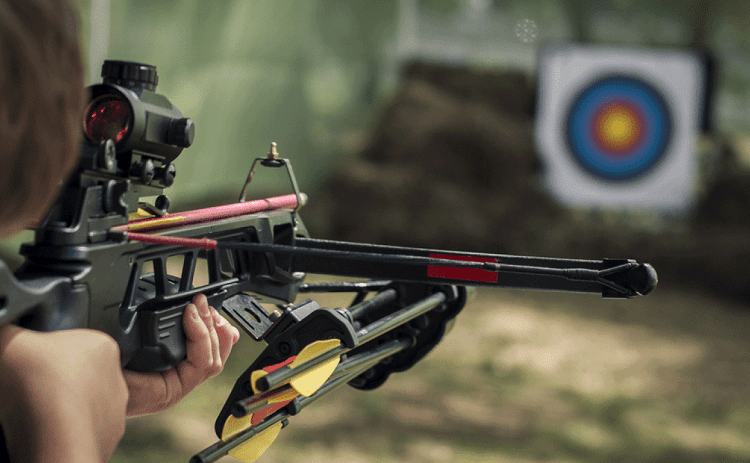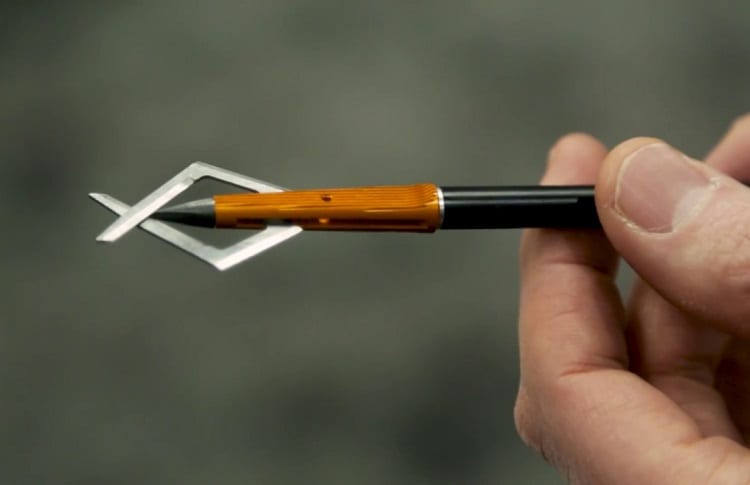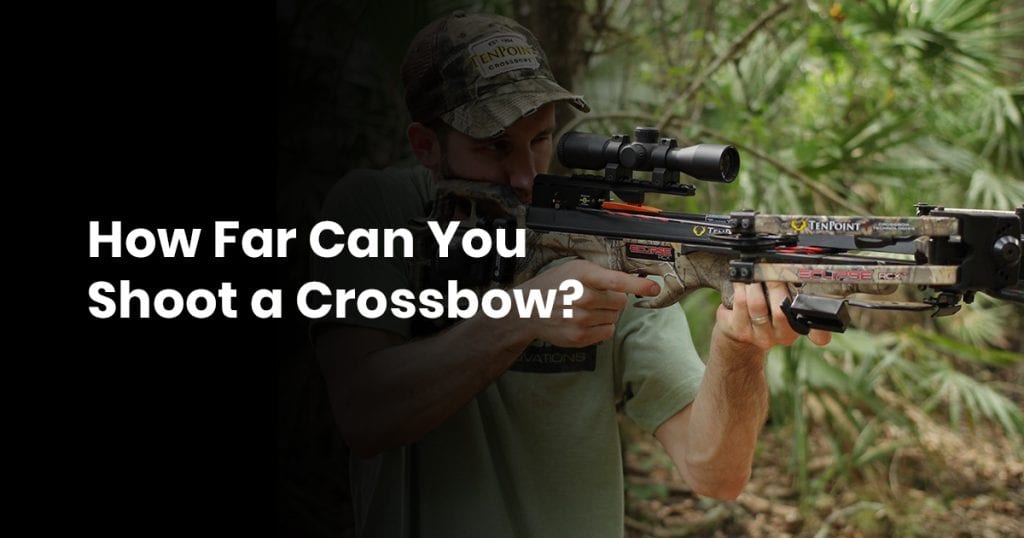Increasing the travel distance of your bolt can make your next hunting trip more successful.
When you can increase the space between you and the animal you are hunting, it is easier to take your shot without startling your target.
As a bowhunter, you probably realize that a shorter distance between you and your target is a given.
However, that doesn’t mean that you have to settle for the same distance that you’ve always relied on. Increasing your hunting distance is possible for many bowhunters.
If you’ve switched from a traditional bow to a crossbow, you’ve taken the first steps to increase your hunting distance.
Increased distance is best achieved with a combination of technique and equipment. The first step to increasing how far your bolts will travel is spending time at the range.
Like with any activity that you participate in, success comes with practice. Bowhunting is no exception.
Distance and accuracy all increase the more comfortable you become with your bow and the bolts that you will use each hunting season.
What is the maximum crossbow range?

When you are looking at your crossbow range, it is important that you understand the difference between the maximum range that your crossbow can shoot and the maximum range that you can shoot accurately.
Your crossbow has the ability to shoot bolts a fairly significant distance.
If you are only considering the full possible distance, and you are not looking to actually hit a target, the distance that you can shoot your crossbow can be substantial.
Keep in mind that the maximum possible distance that your crossbow will shoot also means that while your bow might travel a long-range, it isn’t likely to be effective at actually making a kill at this distance, even if your shot is accurate.
As your bow travels it will lose velocity, which will decrease its ability to be a lethal or even wounding projectile.
If you are simply considering the actual, maximum distance that you can shoot a bolt with your crossbow, a good 300 FPS crossbow can shoot a bolt as far as 500 yards.
This is a good distance, and if you were shooting a target at this range, with a hunting rifle or shotgun, you could perhaps hit your target.
However, at this distance, your crossbow is not going to achieve a clean pass through, and it certainly won’t be accurate.
If you are truly considering the maximum effective hunting range of your crossbow, the distance you can expect to achieve with your crossbow is going to be substantially less than 500 yards.
With the same 300 FPS crossbow, your actual, effective hunting range is more likely to be in the range of 50 to 80 yards.
Even at 80 yards, you are going to need to make some adjustments to the bolt you are using to have an effective shot.
Your maximum effective hunting range is really dependent on your equipment and your skills. Most crossbows on the market will give you a good, maximum distance of 50 to 60 yards.
However, many hunters prefer to bring this maximum distance down to around 35 yards.
At this distance, you can be certain that your shot will be more accurate, and will have a clean pass through.
At 35 yards, your crossbow will give enough velocity to your bolt that it will kill the intended target, instead of just wounding the animal.
Keep in mind, while the manufacturer may give you a maximum distance value for your crossbow, maximum distance, in reality, is very individualized.
If you are new to bow hunting, your maximum effective hunting distance is likely to be less than for individuals that have been bow hunting for many years and have honed their skills and accuracy.
How to improve the range of your crossbow
There are a number of steps that you can take to improve the range of your crossbow.
Keep in mind that while you can make modifications to your crossbow that will theoretically make your shots travel further, the effectiveness of these shots will still depend on your skill.
Practice
Just because you’ve bought the best bow on the market, doesn’t mean that your distance is going to be amazing, right out of the box.
Maximum effective hunting distance, really only improves as your skill grows. You should spend a good amount of time at the range, practicing.
This means practicing with a variety of bolts and broadheads. Each bolt and each broadhead will travel differently.
Just as different bolts and broadheads are useful in varying situations, the way you shoot them will also vary.
Practicing with each bolt and broadhead combination in your quiver will allow you to increase your maximum effective hunting range with each combination.
Tune Your Bow
If your bow isn’t well-tuned or balanced, you will be challenged with both distance and accuracy.
Make sure that your bow’s brace height and tiller are set at the manufacturer’s recommended distances and that they are balanced.
This will ensure that your bow is working as it was intended to.
Proper Maintenance
This should be a no-brainer. If you don’t maintain your crossbow properly, it probably isn’t going to work as well as it should, and your distance is definitely going to decrease.
Make sure that you are familiar with the maintenance practices that are detailed in your bow’s owner’s manual.
These instructions that likely include tasks like lubricating the light rail, and waxing the string, and intended to both increase the life of your bow, but also to help with accuracy and distance.
When you are doing routine maintenance you will also want to make sure that accessories are well attached and that bolts are appropriately tightened and in good condition.
If your bow has been exposed to wet or cold weather, you may find that your tune and bow adjustment has changed.
Proper Fit
Bows aren’t a “one size fits all” hunting tool. A poorly fit crossbow is not going to perform well for you.
When you purchase a new bow, make sure that it is the right size for your body and for your strength. This will help you properly cock your bow and to hold it stable when shooting.
A correctly fit bow will work better for you than one that is too big or too small. You may need to test out a few different models before settling on the right one for you.
Bolt and Broadhead Selection

The right bolt and broadhead combination can make a big difference in the distance you can achieve with your crossbow.
A couple of things to keep in mind when you are selecting bolts, specifically. Most crossbow manufacturers have bolts that they recommend for the best performance.
Selecting bolts that are recommended for your bow, is the quickest way to increase your maximum effective hunting range.
Using a bolt that hasn’t been tested in your crossbow may result in poor bow performance, and thus decreased the distance.
What broadhead should you use for maximum range?
Broadhead selection is pretty personal.
Each hunter has a broadhead style that they prefer. In this discussion, it is important to reiterate that your distance and accuracy with any bolt or broadhead improves the more you practice.
Each broadhead has its own way of traveling.
Understanding the performance of your broadhead selection, and then practicing with it frequently is the first step to improving your distance, no matter the broadhead you select.
While many hunters prefer mechanical broadhead as a way to improve distance and accuracy, they do have some challenges.
Mechanical broadheads tend to be a bit heavier, which can slow down your bolt during travel.
While this weight is handy when it comes to penetrating through skin and muscle, most mechanical broadheads have a slower travel rate.
This slower rate will translate into a shorter distance. Even with a high-velocity crossbow, you will notice a decrease in distance with a mechanical broadhead.
Fixed broadheads seem to provide more consistent results when it comes to distance. Many bowhunters will tell you that your best results come from a fixed blade broadhead.
Specifically, for the best distance and accuracy, consider the lightest, slimmest fixed blade broadhead you can find for the species that you are hunting.
The slim lines will reduce friction and drag through the air, keeping bolt speed consistent for a longer distance.
Additionally, a lightweight broadhead will travel further, especially with higher FPS crossbows.
Lighter weight broadheads will allow the bolt to travel further before the arch of travel shifts downward.
While increased distance is a great thing when you’re bow hunting, you should be aware of the capabilities of your equipment and skills before you venture out on your next hunting trip.
Minor changes to your equipment and a little more time practicing can make a significant improvement in not only your distance but also with accuracy.
This combination of equipment and practice will help you have a bountiful hunting season.
Arrow Travel – Speed of an Arrow
When using compound bows, it is important to consider the weight of the arrow. The speed of arrows can be affected by the weight of the arrow, so choosing the right weight is crucial.
A recurve bow is another option to consider, as it can also impact the speed of your arrows. Additionally, weather conditions can play a role in the performance of your arrows.
It is recommended to use 350-grain arrows for optimal results. The speed of the arrow is a key factor to consider, as it can affect accuracy and distance.
When shooting an arrow, it is important to have a higher draw weight for better results. Considering all these factors is a good idea to maximize the arrow’s speed and performance. When at full draw, the actual arrow speed can be determined.
Magic arrows are not a real thing and should not be relied upon for hunting or target practice. It is always a good idea to consult reliable sources, the International Bowhunting Organization provides guidelines and regulations for the use of arrows in hunting. Using a lighter arrow can result in higher speeds and increased kinetic energy.
The international bowhunting organization provides guidelines and regulations for the use of arrows in hunting. Using a lighter arrow can result in higher speeds and increased kinetic energy.
A telescopic sight can help improve accuracy when shooting a crossbow arrow. Cresting jigs are tools used to add decorative designs to the arrow shaft.
Optical chronographs and Doppler chronographs are devices used to measure the speed of the arrow. It is important to use a single shot when shooting a crossbow arrow. Considering the draw length of the bow is essential for selecting the right arrow.
When shooting a crossbow arrow, it is important to consider the draw weight of the bow. Lighter arrows can be used with a lower draw weight, allowing for easier shooting and less strain on the bow guy.
The kinetic energy of the arrow is also affected by the draw weight, with higher draw weights resulting in greater energy transfer upon impact, more heavier arrows producing greater accurate shots.
The IBO test is a standard measurement used to determine the speed of an arrow, and faster arrows can be achieved with a higher draw weight. Avid bowhunters often experiment with different arrow weights and draw weights to find the best combination for their needs.
The bowstring material is another factor to consider when shooting a crossbow arrow. Different materials can affect the speed and accuracy of the arrow.
Fire arrows, which are arrows designed to be set on fire before shooting, are a historical archery variation that requires special precautions and expertise. It is important to follow safety guidelines and use fire arrows responsibly, its also a great to understand the amount of energy produced at higher speed once the arrow shot.
By experimenting with different combinations and considering factors such as the bowstring material, as a avid bowhunter you can optimize your shooting experience. Safety should always be a top priority when using any type of archery equipment.
Crossbow arrows have been used for a long time as effective projectiles for hunting and target shooting.

